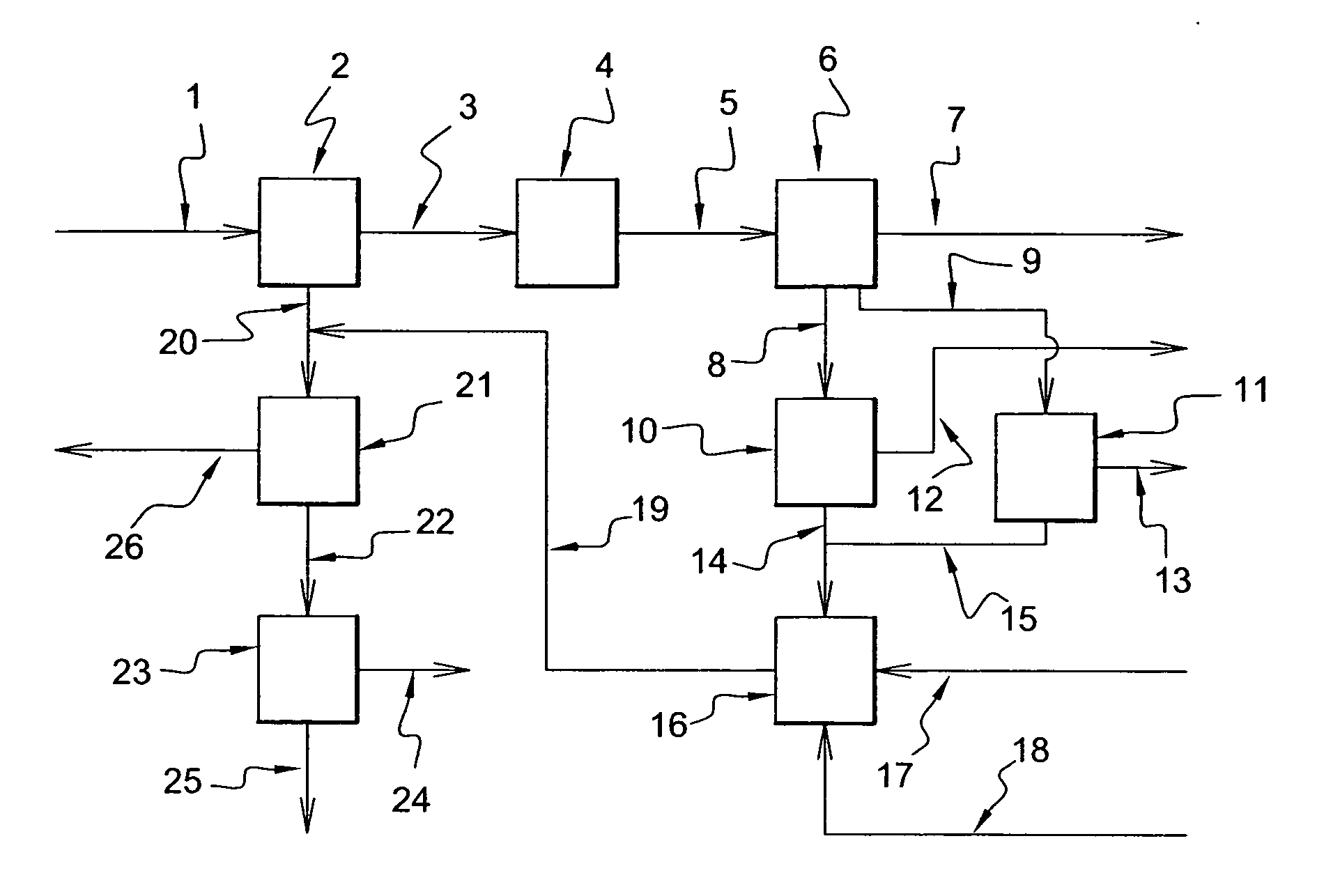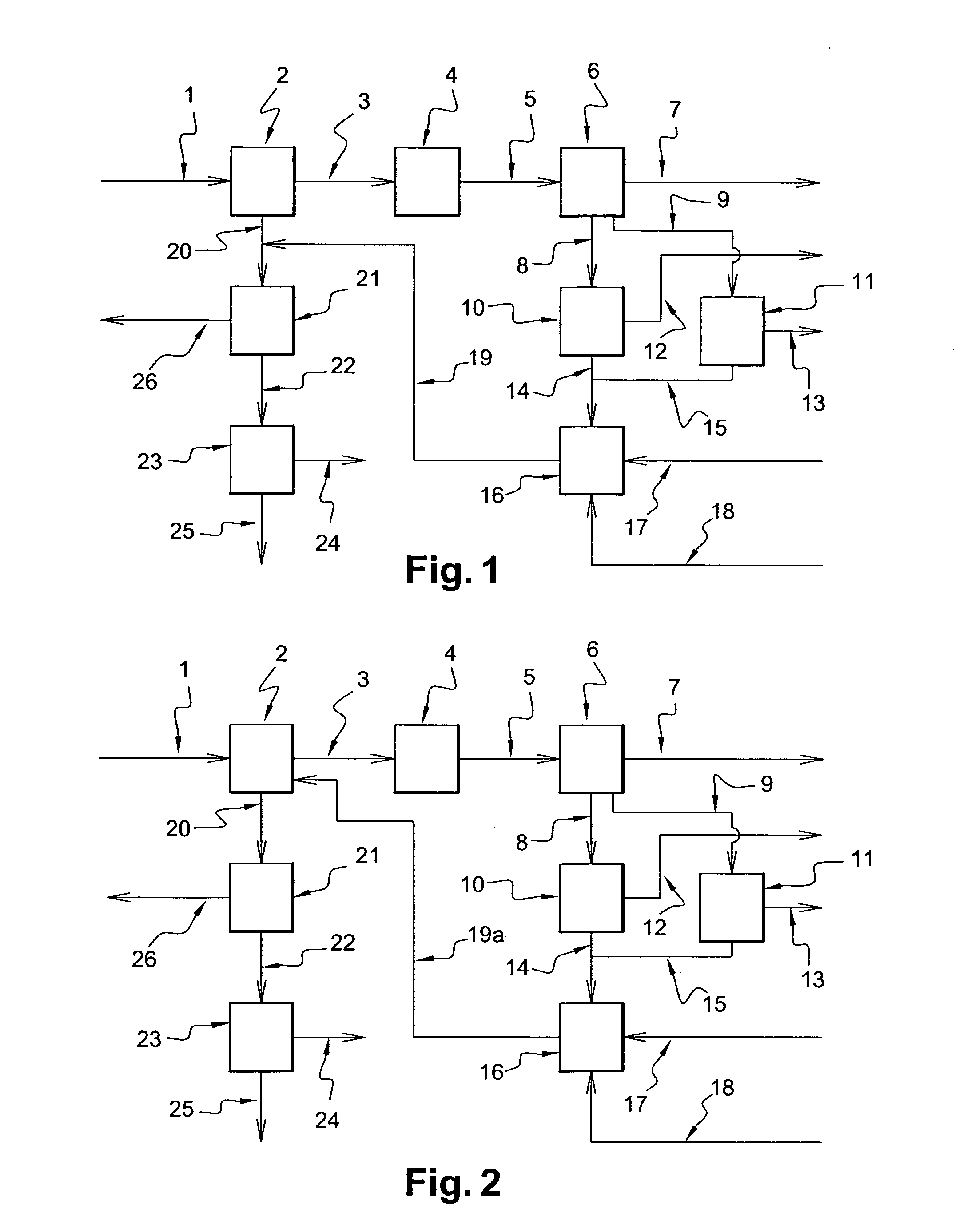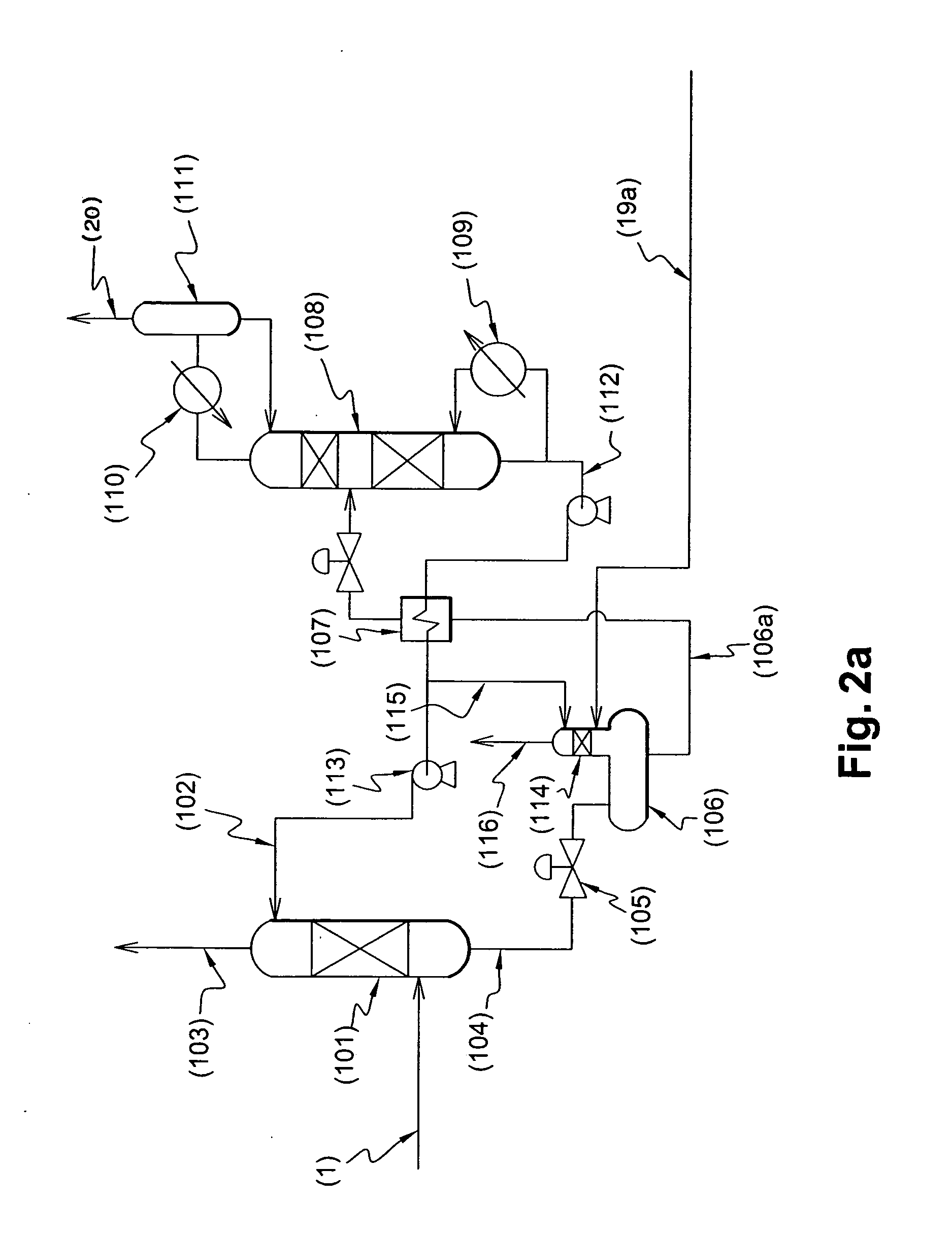Process and installation for the treatment of DSO
a technology of disulfide hydrogenation and installation, which is applied in the direction of liquefaction, solidification, lighting and heating apparatus, etc., can solve the problems of mercaptan extraction only slightly, the need for lpg treatment, and the inability to extract mercaptan from propane and butane cuts using molecular sieves
- Summary
- Abstract
- Description
- Claims
- Application Information
AI Technical Summary
Benefits of technology
Problems solved by technology
Method used
Image
Examples
example
[0119] The example given below corresponds to the process according to the first alternative of the second embodiment.
[0120] The natural gas 1 is treated successively in the units 2 and 4 and is liquefied in the unit 6. During liquefaction, the propane and the butane are extracted and the mercaptans are consequently simultaneously condensed. They are treated by washing with sodium hydroxide in units 10 and 11 and the DSO is produced at 14 and 15. After hydrogenation in 16 where the natural gas is used as a diluent to limit the temperature rise, the DSO transformed into H2S is sent to the entry of the enrichment unit 21. The liquefied natural gas 7 meeting the sulfur content specifications is produced directly by condensation of mercaptans without supplementary treatment.
[0121] The material balance given below (Table) allows one to follow the migration of the sulfur contained in the mercaptans. This Table gives the composition and the rates of the principal flows. Certain flows are...
PUM
| Property | Measurement | Unit |
|---|---|---|
| Fraction | aaaaa | aaaaa |
| Fraction | aaaaa | aaaaa |
| Flow rate | aaaaa | aaaaa |
Abstract
Description
Claims
Application Information
 Login to View More
Login to View More - R&D
- Intellectual Property
- Life Sciences
- Materials
- Tech Scout
- Unparalleled Data Quality
- Higher Quality Content
- 60% Fewer Hallucinations
Browse by: Latest US Patents, China's latest patents, Technical Efficacy Thesaurus, Application Domain, Technology Topic, Popular Technical Reports.
© 2025 PatSnap. All rights reserved.Legal|Privacy policy|Modern Slavery Act Transparency Statement|Sitemap|About US| Contact US: help@patsnap.com



